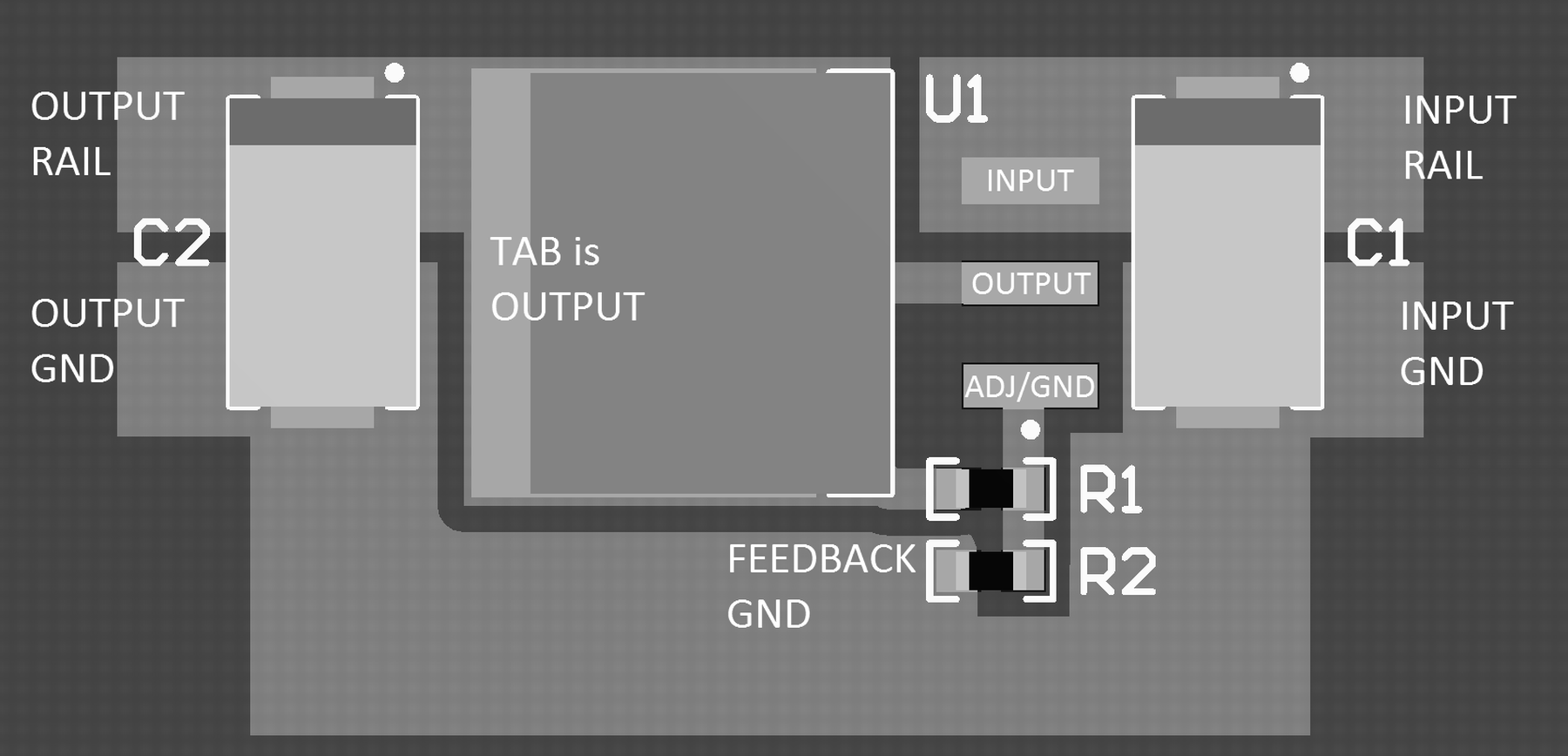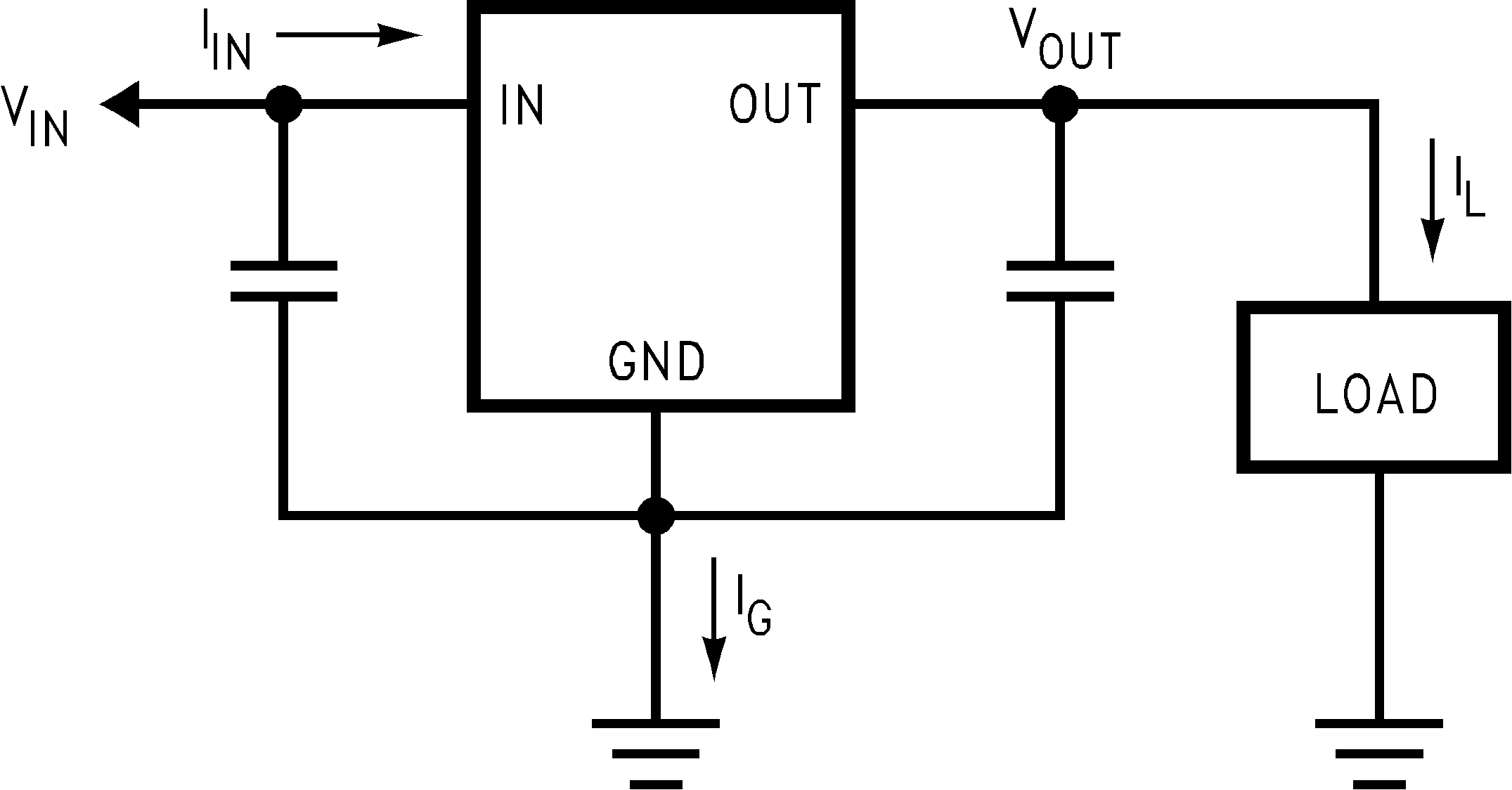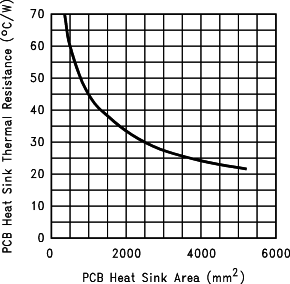SNVSAX4 June 2017 LM1086-MIL
PRODUCTION DATA.
- 1 Features
- 2 Applications
- 3 Description
- 4 Revision History
- 5 Pin Configuration and Functions
- 6 Specifications
- 7 Detailed Description
-
8 Application and Implementation
- 8.1 Application Information
- 8.2 Typical Applications
- 8.3
Other Applications
- 8.3.1 Adjustable at 5 V
- 8.3.2 5-V Regulator with Shutdown
- 8.3.3 Battery Charger
- 8.3.4 Adjustable Fixed Regulator
- 8.3.5 Regulator With Reference
- 8.3.6 High-Current Lamp-Driver Protection
- 8.3.7 Battery-Backup-Regulated Supply
- 8.3.8 Ripple Rejection Enhancement
- 8.3.9 Automatic Light Control
- 8.3.10 Remote Sensing
- 9 Power Supply Recommendations
- 10Layout
- 11Device and Documentation Support
- 12Mechanical, Packaging, and Orderable Information
Package Options
Mechanical Data (Package|Pins)
- Y|0
Thermal pad, mechanical data (Package|Pins)
Orderable Information
10 Layout
10.1 Layout Guidelines
For the best overall performance, follow these layout guidelines. Place all circuit components on the same side of the circuit board and as near as practical to the respective linear regulator pins connections. Keep traces short and wide to reduce the amount of parasitic elements into the system. The actual width and thickness of traces depends on the current carrying capability and heat dissipation required by the end system. An array of plated vias can be placed on the pad area underneath the TAB to conduct heat to any inner plane areas or to a bottom-side copper plane.
10.2 Layout Example
 Figure 29. Layout Example
Figure 29. Layout Example
10.3 Thermal Considerations
ICs heats up when in operation, and power consumption is one factor in how hot it gets. The other factor is how well the heat is dissipated. Heat dissipation is predictable by knowing the thermal resistance between the IC and ambient (RθJA). Thermal resistance has units of temperature per power (°C/W). The higher the thermal resistance, the hotter the IC.
The LM1086-MIL specifies the thermal resistance for each package as junction to case (RθJC). In order to get the total resistance to ambient (RθJA), two other thermal resistance must be added, one for case to heat-sink (RθCH) and one for heatsink to ambient (RθHA). The junction temperature can be predicted as follows:
where
- TJ is junction temperature
- TA is ambient temperature
- PD is the power consumption of the device
Device power consumption is calculated as follows:
Figure 30 shows the voltages and currents which are present in the circuit.
 Figure 30. Power Dissipation Diagram
Figure 30. Power Dissipation Diagram
Once the devices power is determined, the maximum allowable (RθJA (max)) is calculated as:
RθJA (max) = TR(max)/PD = TJ(max) − TA(max)/PD
The LM1086-MIL has different temperature specifications for two different sections of the device: the control section and the output section. The Thermal Information table shows the junction to case thermal resistances for each of these sections, while the maximum junction temperatures (TJ(max)) for each section is listed in the Absolute Maximum Ratings section of the data sheet. TJ(max) is 125°C for the control section, while TJ(max) is 150°C for the output section.
Calculate RθJA (max) separately for each section as follows:
The required heat sink is determined by calculating its required thermal resistance (RθHA (max)).
(RθHA (max)) should also be calculated twice as follows:
If thermal compound is used, RθCH can be estimated at 0.2°C/W. If the case is soldered to the heat sink, then a RθCH can be estimated as 0°C/W.
After, RθHA (max) is calculated for each section, choose the lower of the two RθHA (max) values to determine the appropriate heat sink.
If PC board copper is going to be used as a heat sink, then Figure 31 can be used to determine the appropriate area (size) of copper foil required.
 Figure 31. Heat Sink Thermal Resistance vs Area
Figure 31. Heat Sink Thermal Resistance vs Area